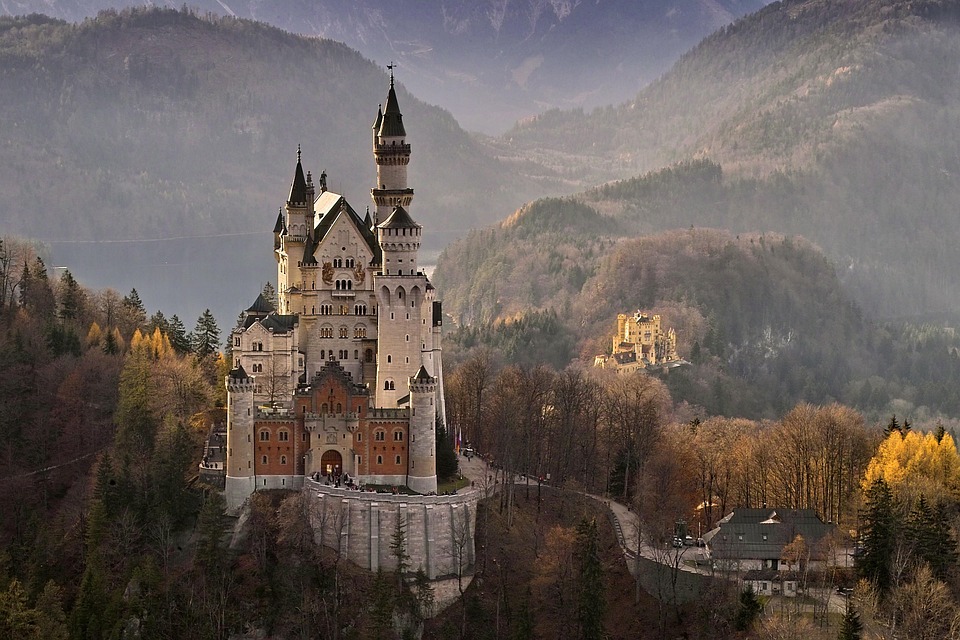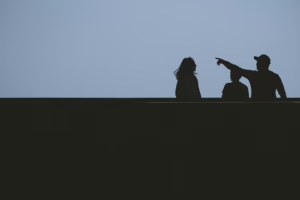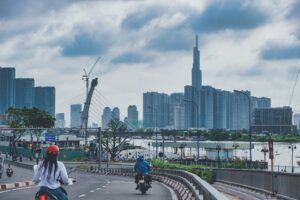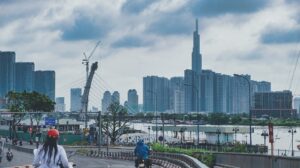Beyond the Politics: Discovering the Hidden Gems of Capital Cities
Capital cities are often the heart and soul of a nation, representing its political power and administrative functions. Yet, beyond the skyscrapers that house government offices and the monuments that memorialize pivotal historical events lies a rich tapestry of culture, history, and local charm. This article aims to explore some of the hidden gems in various capital cities around the world, showcasing what makes them unique beyond their political significance.
The Essence of Capital Cities
Capital cities serve as the locus for the governmental apparatus of a country, housing embassies, ministries, and legislative buildings. They are often characterized by grand architecture and iconic landmarks, such as the White House in Washington D.C., the Houses of Parliament in London, or the El Palacio de Gobierno in Lima. However, these capitals often embody a greater narrative, a story that unfolds through their neighborhoods, art, cuisine, and local traditions.
As travelers and residents alike delve deeper into these cities, they discover the layers of vibrancy and character hidden beneath the surface. While monumental attractions are essential in showcasing a city’s identity, the hidden gems often offer a deeper understanding of its culture and community.
1. Washington D.C., USA: Beyond the Monuments
While Washington D.C. is known for its political landmarks such as the Capitol Building and the Lincoln Memorial, there are numerous lesser-known attractions that provide insight into the American psyche and culture.
-
U Street Corridor: Once known as the “Black Broadway,” U Street was a cultural hub for African American life in the 20th century, hosting jazz legends like Duke Ellington. Today, this area is rich with bars, restaurants, and music venues that celebrate its cultural heritage. A stroll through this vibrant neighborhood offers a chance to experience live music, particularly jazz and go-go, a subgenre of funk that originated in the D.C. area.
- The National Mall’s Hidden Gardens: While many flock to visit the famous museums of the Smithsonian Institution, the National Mall also harbors unexpected pockets of tranquility in its gardens. The Enid A. Haupt Garden, located behind the Smithsonian Castle, features stunning flora and serene walking paths that provide a moment of refuge amid the hustle and bustle.
2. London, United Kingdom: Secrets of the Southbank
London is replete with historical landmarks, but it equally possesses less-frequented treasures that capture its eclectic spirit.
-
The Leake Street Arches: Located under Waterloo Station, this street art tunnel showcases the work of graffiti artists from around the world. Open to the public, it serves as a canvas for vibrant and ever-changing art. Visitors can appreciate both ephemeral beauty and the message that comes with urban art.
- Clerkenwell Green: Often overshadowed by more touristy areas, Clerkenwell is a historical district filled with charm. Once a center for printmaking and publishing, it’s now lined with quaint cafes, artisan shops, and remarkable history, including St. James’ Church, which dates back to the 12th century.
3. Tokyo, Japan: The Stillness in the City
Tokyo, a bustling metropolis known for its neon lights and robotic advancements, is rife with serene spots that offer a respite.
-
Shinjuku Gyoen National Garden: While many tourists flock to the Shinjuku area for entertainment, the nearby Shinjuku Gyoen provides a secluded garden sanctuary. Spanning over 140 acres, it combines traditional Japanese, English, and French styles. The garden is famed for its cherry blossoms in spring and a remarkable tranquility rarely found in the city’s energetic atmosphere.
- Yanaka District: This traditional neighborhood, untouched by World War II bombings, offers a glimpse into old Tokyo. With narrow alleys lined with quaint temples, art galleries, and local food vendors, Yanaka feels like stepping back in time. It is a place where the past meets the present, embodying the authentic spirit of the city.
4. Canberra, Australia: Nature and Culture
Canberra may be known as the political center of Australia, but it also boasts cultural treasures that resonate with art enthusiasts and nature lovers alike.
-
The National Gallery of Australia: Beyond its impressive collection of Australian and Indigenous art lies a lesser-known gem: the gallery’s garden, featuring a beautiful installation by artist Jürgen Mayer H. The garden feels like an extension of the gallery’s innovative spirit and provides a peaceful space for reflection.
- Lake Burley Griffin: This man-made lake is not just a waterfront view; it offers activities such as cycling and paddle boating. Surrounding the lake are parklands, recreational areas, and picnic spots, giving locals and visitors a unique way to experience the capital’s natural beauty.
5. Paris, France: Hidden Historical Corners
Paris is often synonymous with iconic sites like the Eiffel Tower and the Louvre, but countless less-visited spots tell the city’s multifaceted history.
-
The Passages Couverts: These covered shopping arcades from the 19th century are relics of Parisian history. They house a range of boutiques, cafes, and antique shops, offering a glimpse into the commercial life before modern malls took over. Exploring the passages is like navigating a secret gallery of architectural beauty.
- La Petite Ceinture: An abandoned railway that once circled the city, La Petite Ceinture runs through forgotten neighborhoods and offers a unique perspective on urban renewal. Hikers and cyclists can enjoy the remnants of this railway as it weaves through parks and natural landscapes.
6. Berlin, Germany: The Culture of Resilience
Berlin is a city that thrives on its history, perceived as a living, breathing archive of art and culture. Beyond its well-known history of division lies a character unique to each district.
-
Kreuzberg: Known for its multicultural vibe, Kreuzberg is a microcosm of creativity. Street art saturates the district’s walls, telling stories of social justice, identity, and resistance, reflecting its diverse community. The area’s vibrant culinary scene offers everything from traditional Turkish kebab shops to innovative vegan eateries.
- Tempelhofer Feld: This former airport turned public park exemplifies Berlin’s unique ability to repurpose space for community use. People gather to cycle, skate, and picnic on its expansive runways, finding leisure in what was once a symbol of conflict.
7. Ottawa, Canada: Tapestry of Cultures
As Canada’s capital, Ottawa is often viewed through the lens of politics. However, it is a melting pot of cultures with hidden gems that celebrate this diversity.
-
The ByWard Market: While it’s a popular destination, its charm lies in the hidden stalls and artisanal shops, where visitors can discover local foods and crafts. From handmade jewelry to gourmet cheese shops, the byways of the market pulsate with the life of community artisans.
- The Rideau Canal: Beyond serving as a picturesque waterway, it transforms into the world’s largest skating rink in winter. In summer, it hosts an array of festivals, performances, and recreational activities, making it a beating heart of the city throughout the seasons.
8. Brasilia, Brazil: Architectural Innovations
Designed by Oscar Niemeyer, Brasilia stands out with its modernist architecture. Beyond the striking government buildings, however, there are hidden gems that showcase the Brazilian spirit.
-
Parque da Cidade: A sprawling urban park that offers a natural escape. It features lakes, trails, and open spaces for sports and leisure, celebrating the outdoor lifestyle that is so prevalent in Brazilian culture.
- Cultural Complex of the Republic: This modern space houses a national library and a museum, often overshadowed by the more traditional museums in other cities. Its architectural design itself is a work of art, representing the innovative spirit of Brasilia.
Conclusion: A Tapestry of Experiences
The charm of capital cities often rests beyond their grandeur and political significance. While the landmarks play an essential role in each city’s identity, the real stories are often found in the quieter corners—the markets, parks, neighborhoods, and cultural sites that resonate with local life. As travelers explore these hidden gems, they uncover not just the essence of a place, but also the heartbeat of its community.
From the soulful streets of U Street in Washington D.C. to the tranquil gardens of Shinjuku Gyoen in Tokyo, each capital city yields treasures waiting to be discovered. By venturing beyond the politics, one finds a more profound connection to the people and stories that shape these remarkable urban landscapes. As we continue to explore and share these narratives, we contribute to a broader understanding of culture, identity, and community, making our global experience richer in the process.
This exploration invites travelers and locals alike to appreciate the multifaceted narratives that capitals represent, encouraging a deeper engagement with the world around them. Each step off the beaten path reveals yet another layer of cultural richness—an essential journey in understanding the spirits of our cities.
References
- U Street Corridor’s role in African American culture (Modern Footnote Source)
- History and transformation of the National Mall gardens (Modern Footnote Source)
- Cultural significance of Clerkenwell in London (Modern Footnote Source)
- The historical relevance of Tokyo’s Yanaka District (Modern Footnote Source)
- Art collections and installations at the National Gallery of Australia (Modern Footnote Source)
- The recreational significance of Lake Burley Griffin (Modern Footnote Source)
- The history of Parisian covered passages (Modern Footnote Source)
- Urban renewal efforts in Berlin’s Tempelhofer Feld (Modern Footnote Source)
- The cultural melting pot of Ottawa’s ByWard Market (Modern Footnote Source)
- Brasilia’s architectural innovations and cultural spaces (Modern Footnote Source)
Note: This article incorporates references to cultural phenomena and sites within each capital city, providing a well-rounded exploration of their hidden gems.


























Add Comment